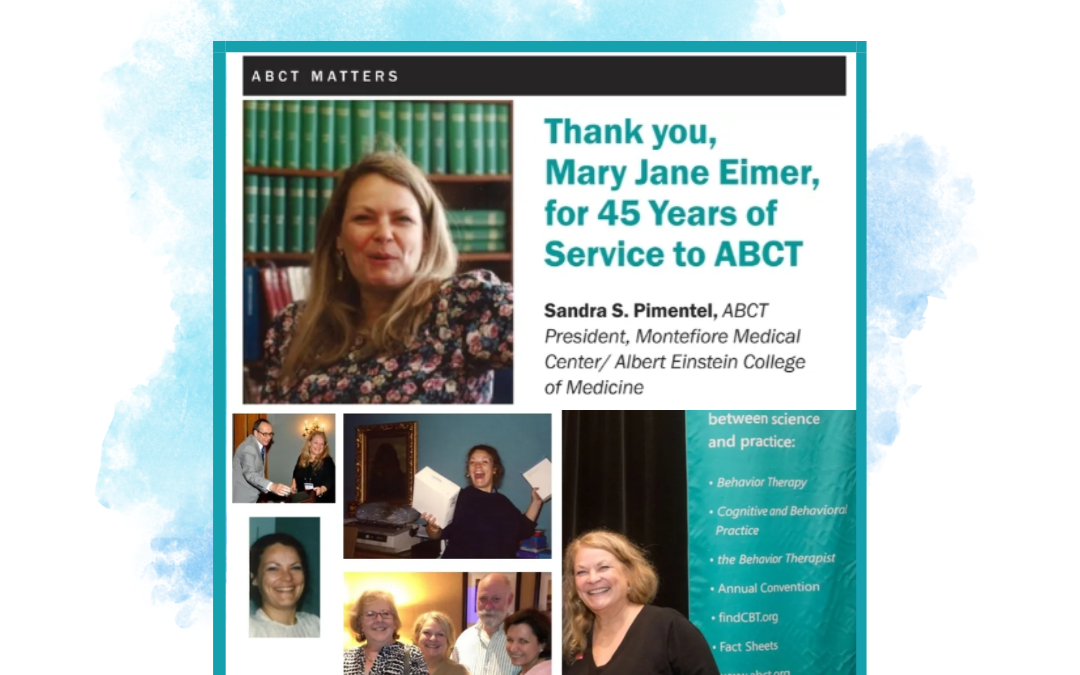Find a CBT Therapist
Search through our directory of local clinicians.
the Behavior Therapist’s June 2024 Issue Is Now Available Online
Don’t miss the June 2024 issue of the Behavior Therapist, paying tribute to Executive Director Mary Jane Eimer and her incredible 45 years of service to ABCT.
We’ve prepared a how-to guide to help you navigate tBT online. Read on for more details or click above for the issue.
The first page of any digital issue of tBT will be the table of contents. From here, you can jump directly to articles that interest you.

Click on an article’s title to be taken directly that article.

See example of how articles appear in online tBT directly below.

If you need to enlarge the text size of the article, click its title. This will open “article view.”
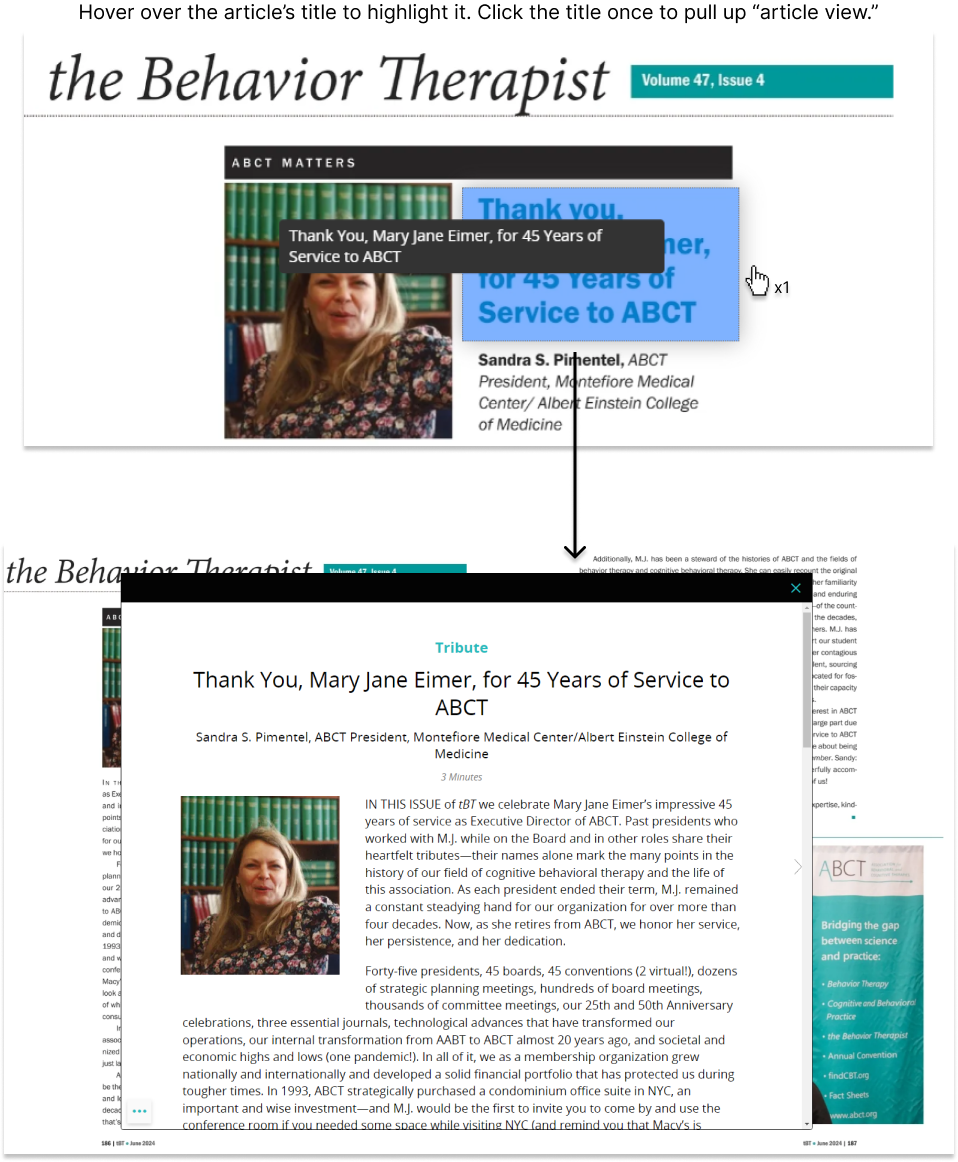
Click the three horizonal dots on the lefthand size of the pop-out window to open the article view menu. Use the options on this menu to further aid your experience.
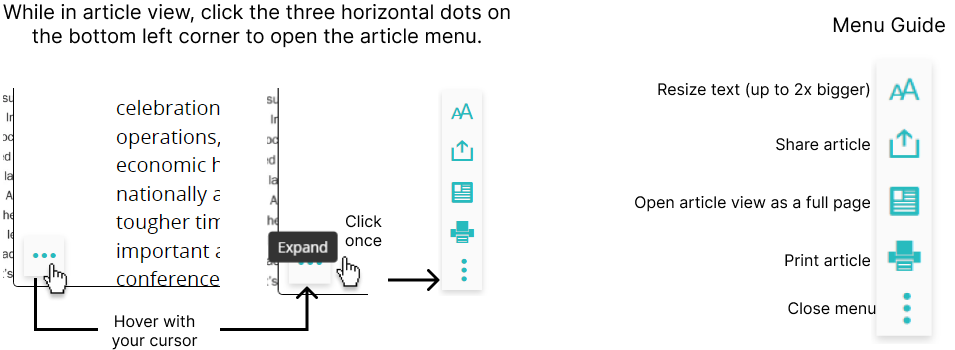
As shown directly below, you can further enhance the article’s text size for ease of viewing. Click the “resize text” option on the menu demonstrated above.
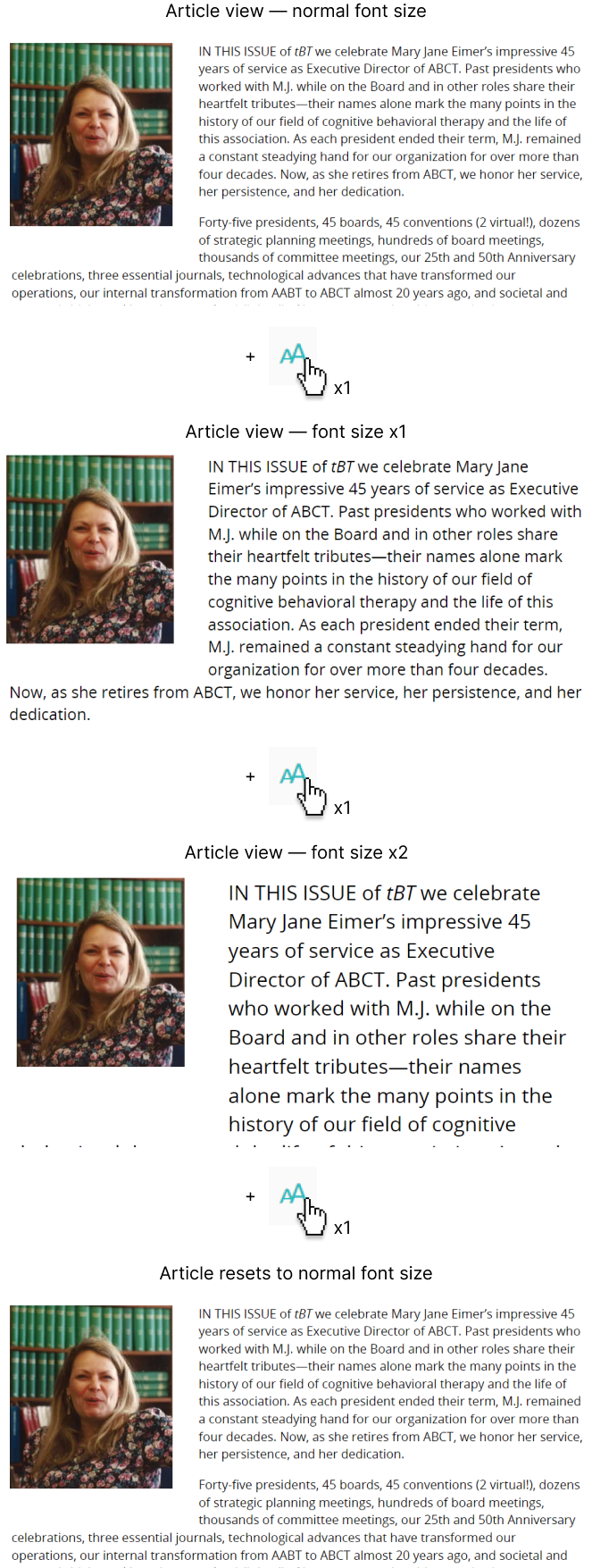
You can experience article view as a full page instead of a pop-up window. Click the appropriate icon on the menu as demonstrated directly below.

If you’d like to exit article view, and you’re still in the pop-up view, click anywhere outside the pop-up to return to the normal page.
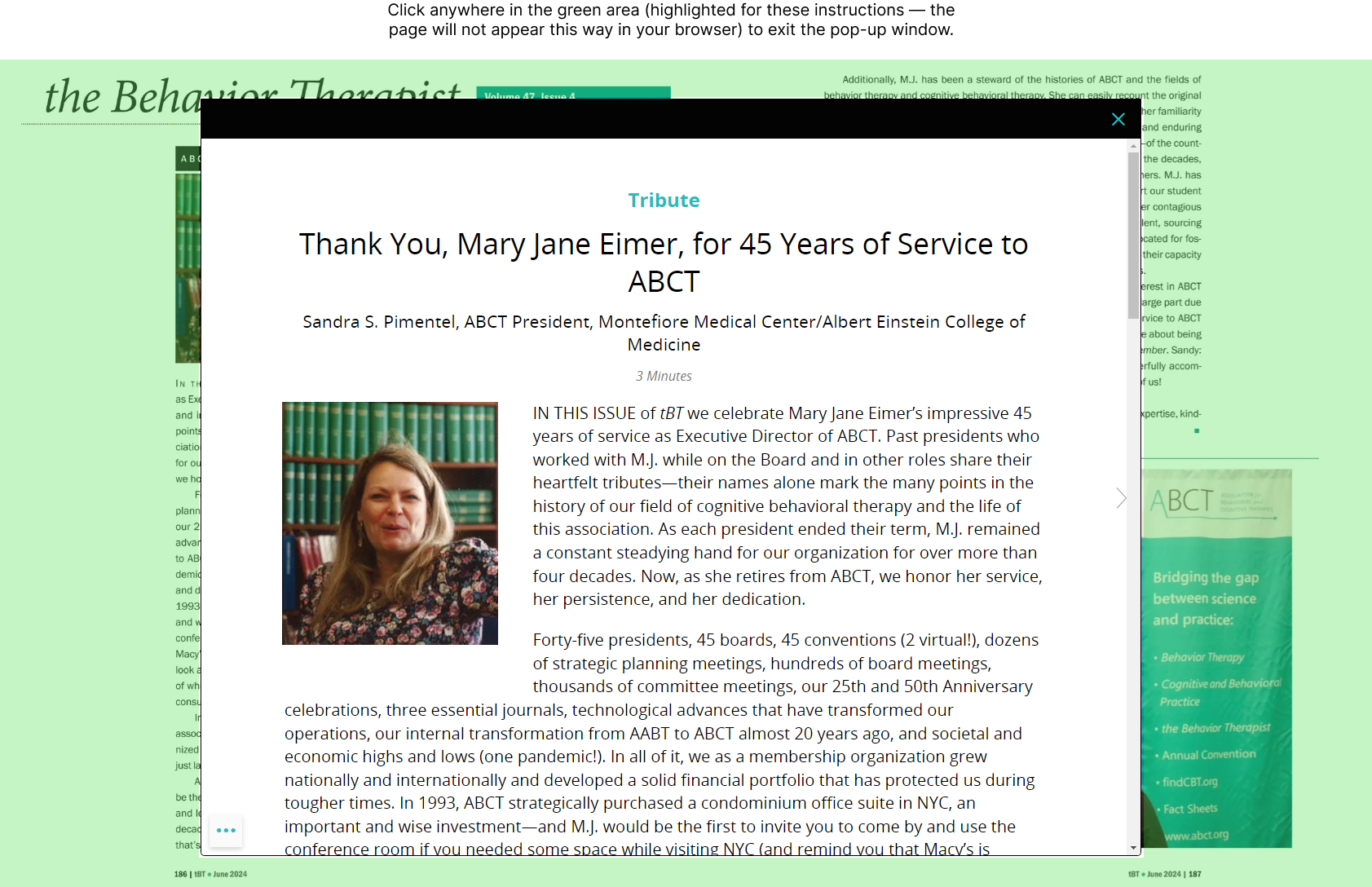
If you’re viewing article mode as its own page, click the appropriate icon as shown below to return to the journal.

For more tips, see our March post for tBT.

